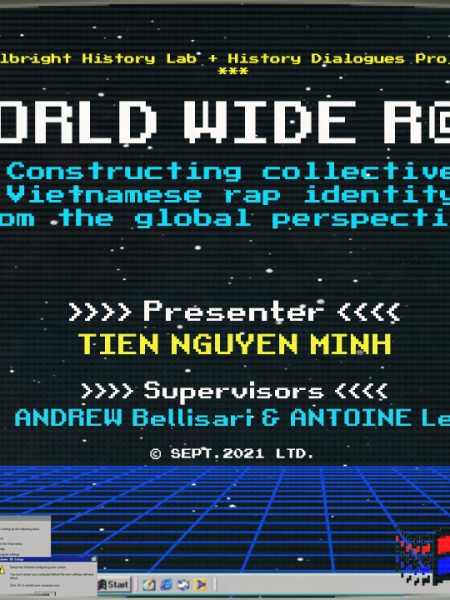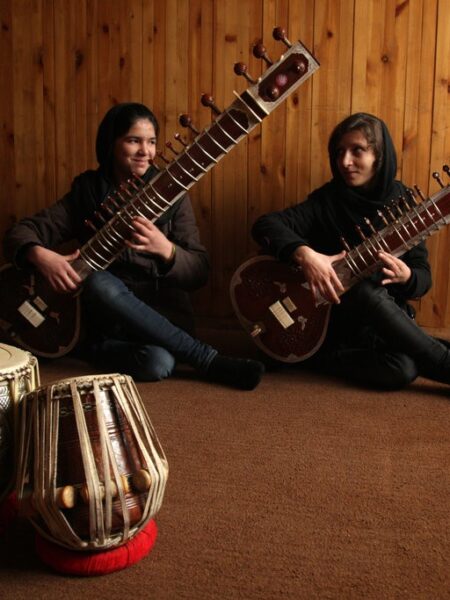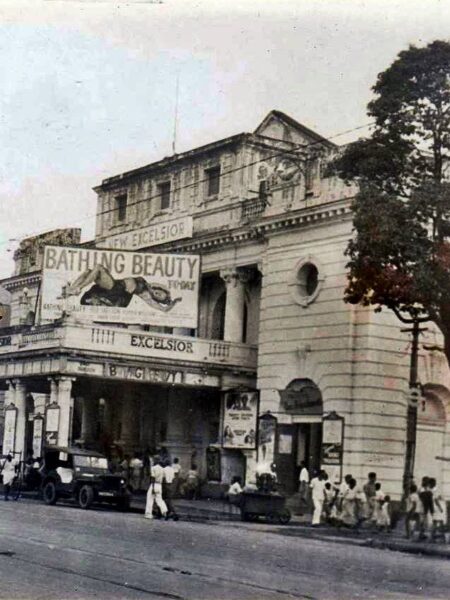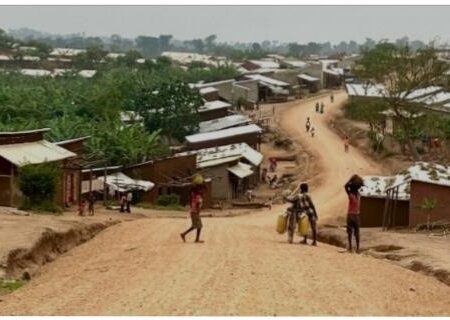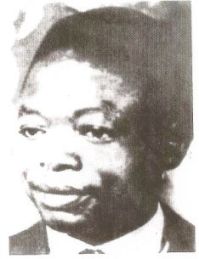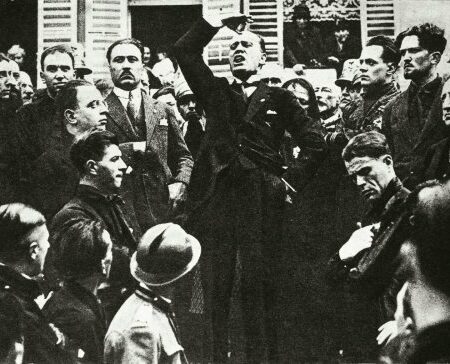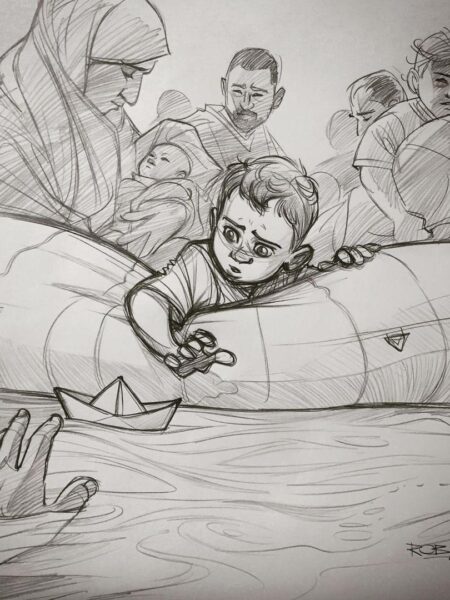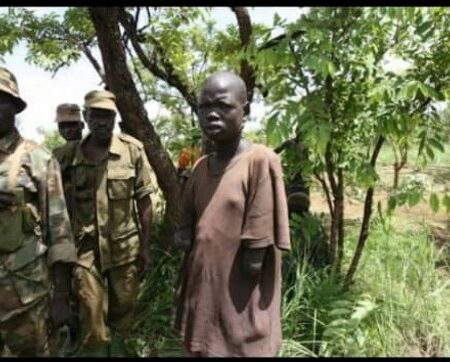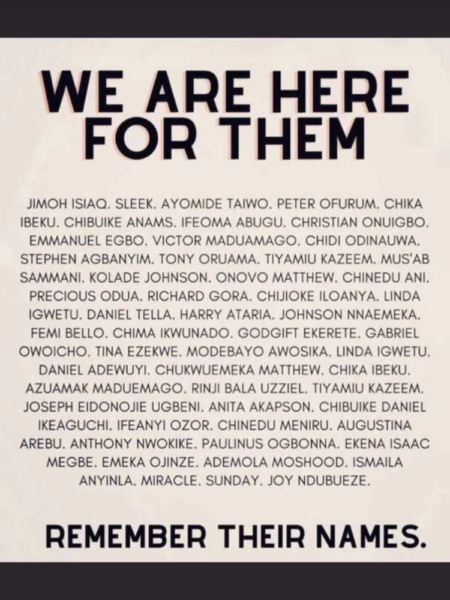Many are the roads that lead to Rome. Many are the means of transportation that accompany those emotioned travelers who dive into the charm of the Holy City for the first time. When you get off the plane, you can take a taxi or a comfortable Leonardo Express and find yourself immediately in the centre of Rome, without even noticing what surrounds it. If you arrive by train, in the same way, you are immediately introduced to the Historic City. There, despite a few, bearable and picturesque inconveniences, you can be thrilled by the beauty, the ancient and mighty soul of Old Rome. The aim of this research is to enter Rome without shortcuts, travelling in those lands crossed and often wounded by highways and railways: the suburbs of Rome.
We will imagine ourselves as travelers arriving for the first time in Rome. First, we will be sailing on the waters of the Tiber, visiting the Idroscalo and finally we will walk along the ancient and famous viae consulares that contributed to the greatness of Ancient Rome, discovering the poor neighborhoods Tor Bella Monaca and Centocelle.

Following a route beyond touristic maps, we realized that something is wrong, that the breath of the city is sick, and that the magic of a red sunset over the imperial forums is actually only an illusion for the visitors. Fascinated by the history and culture of Rome not many observers realize that the breath of Rome is the pain of a suffering animal.
Although we are Romans, lacking the perspective of foreigners, we are trying to reach the center of Rome after having known and understood the suburbs. This journey is dedicated to those who do not live in Rome, but want to accompany us through this often ignored road to the Eternal City.
Rome: a peripheral city
The city of Rome does not exist. In its place hundreds of other small confused towns have arisen, victims of a policy of ignorance limited to the boundaries of a city that existed two thousand years ago. It often happens to notice, not without suffering, the lack of services that a city requires, the real, tangible, violent poverty of those settlements that have a subhuman quality of life and certainly lower than the expected quality of life in Rome.
Eternity is attributed with surprising ease to the city of Rome, and yet, we must say today that a city without memory is a city that, sooner or later, will cease to be eternal and in that confusion generated by its death will roll into the abyss. If the city is not remembered for its distant and nameless streets, for the hovels at the bottom of the valley, Rome will soon stop living, because it is now certain that a city, a capital, cannot exist in conditions of violence, degradation, poverty and, therefore, ignorance.
For our journey inside the city we choose to start from the mouth of the Tibur because there, precisely along the via dell’Idroscalo, in the night between 1 and 2 November 1975, Pier Paolo Pasolini, one of the most important Italian intellectuals of the last century, a scholar of the periphery and defender of that social class that he himself defined as underclass, was killed in unclear circumstances. Our analysis of the suburbs and the city of Rome includes references to his poetics. We are inspired by the song A Wrong Story by Fabrizio de André, which tells the dark story of Pasolini’s murder.[1]
As Pasolini understood, the history of the suburbs should be deciphered with caution and certainly. This is the most delicate of all political works destined for the city. We believe that every part of the city must be thought of according to the overall problems of the city and that all services to be offered to the citizens should be considered long before the construction of any new neighborhood. We also believe that these services should be thought of in sharing between the various territorial realities, so as to prevent the birth of a series of autonomous self-sufficient unities that threaten social, economic and cultural interdependence between the various parts of the city.
Pasolini’s poetics are one of those cases in which the clarity of a sincere intellectual desire ends up covering the most disparate fields of knowledge, from poetry to cinematography.
Pasolini’s poetics always aimed at experimenting and embracing the last, the inhabitants who live in the Roman borgate, the last defenders of a peasant knowledge to be defended in the face of a neo-capitalist globalism aimed at oppression. Cinema and literature merge in a fairytale narrative of a highly cultured faber in search of truth. The Italian literary scholar Gianni Scalia says that Pasolini – with Nietzsche – “died of truth“, walking only along the path of brave men. After all, abandoned by all, he was among the few to courageously seek the truth, pursuing it in the Roman borgate without falling into any kind of dangerous mysticism.
In the people of Pasolini, “scattered throughout its villages”[2], the ancient strength of the popular world, almost primordial, is found, a strong, genuine people, oppressed by every evil that attacks them. According to Pasolini, they are the solemn people of history associated with Christian love and ancient Christianity. The people whose memory is suffered as a form of violence, which is “anxious for justice”[3]. It seems that only literature can describe such forms of life (and in this sense they could be described as Dostoevskian[4] people). A people that turns to its past with a motionless song over the centuries, the people who ask for ricotta[5] from the ancient Roman fields, wandering among peripheral hovels and old streets feeling, without knowing how to express it, “the heartbreaking, wonderful beauty of creation.”[6]
People’s boy singing,
here in Rebibbia on the miserable bank
Of the Aniene the new song, you boast
it is true, singing, the ancient, the festive
lightness of the simple. But what
hard certainty you raise together
Of imminent redemption, in the midst of unsuspecting
hovels and skyscrapers, cheerful seed
in the heart of the sad popular world.
In your unconsciousness is the consciousness
that in you history wants, this history
whose Man has no more than the violence
Of memories, not free memory…
And by now, perhaps, no other choice has
but to give to his anxiety for justice
the strength of your happiness,
and to the light of a time that begins
the light of one who is what he does not know. [7]
The genesis of suburbs
The suburbs in Rome underwent a twisted genesis. On the one hand, there was the subdivision of the Roman countryside near the historic city, with the consequent construction of aberrant building complexes that could be regarded as the basis of many and serious transformations that have taken place in the area; on the other hand, the distant suburbs arose, often inhabited by immigrants[8], configured in those popular neighborhoods that had the most degraded image in the so-called borgate[9]. Those who will take the name of borgatari[10] could have been Romans forced to leave their homes due to the enrichment of the central districts, but also people who flocked to Rome to make their fortune from the countryside or from the south and settled, at first, in small spontaneous agglomerations that arose on the consular roads. The borgataro was then forced to emigrate outside the walls of the old city or outside the small illegal settlements that surrounded it to be deported to other newly built areas. These houses, which also offered the new inhabitants the comforts they had never known, as we will see, viscerally upset the lifestyle and the sociability of those who settle there.
Starting from the 1970s, a part of the Italian left began to take an interest in the suburbs, obtaining broad consensus and participation from its inhabitants. Until the needs changed and the townspeople began to ask for the city, tight as they were in their places, but requests for services that their spontaneous city did not provide were ignored. The new neighborhoods that arose with the aim of housing the slums, such as Tor Bella Monaca, Corviale and Laurentino 38 were built without essential services, isolated from the rest, and scattered in that large suburb[11] near the G.R.A. ring road.[12] The almost total absence of public transport forces a large part of the Roman population to be heavily dependent on cars.
The structure of suburbs
In the description of the Roman suburbs, we will refer to a scheme where the suburbs are divided into three categories. Let us proceed in historical order: in the aftermath of the unification of Italy it was clear that the papal city was to expand, and areas in direct contact with the historic city, such as Testaccio, Prati and Esquilino, were chosen for the new neighborhoods. The new districts have the compact and orderly structure of the Italian city of the nineteenth century: close to the Roman walls they developed without interruption starting from the historic center. They can be considered the first modern and planned extension of the city. Today these areas are considered semi-central.
The second periphery arose in the fascist era, along the consular roads, still in contact with the city center, but only marginally. Large green areas or, in any case, non-building areas among the newly built land were envisaged in the regulatory plans of the time. These districts identify the places where the new Rome would extend and the forms and densities of housing that would be repeated in the villages for many years. As already mentioned, they replace spontaneous settlements that arose along the access roads to Rome from 1871 onwards and populated by all those who miserably participate in the life of the new capital or who moved to Rome from the hinterland to seek fortune.
The last periphery, the first one encountered when arriving in Rome, is what today tends to be called ‘Periferia Anulare’. It is a periphery different from the other two, to the extent that any form of a dialogue between the pre-existing buildings and the newly built neighborhoods ceases to exist. A constellation of new towns reachable only by car arise around the new highways.
Since the postwar period, the economic miracle has been driven by the automobile industry, and it seems natural that the new Italians will be dependent on private vehicles. Thus in the periferia anulare (which today is the only one among the three suburbs that continues to expand) a car is a must. In this new fragmented Rome, Via del Corso is the ring road, the Campo de’ Fiori market is the great shopping center of Porta di Roma.
There are two realities in the last periphery: the periphery made up of small semi-abusive private houses built in the Roman countryside (such as the Idroscalo area), and the newly planned periphery that at the time of its construction could have become a cultural fact of a great importance had it been conceived from the overall point of view of the city. But this did not happen. If the construction of the periferia anulare was also foreseen in the regulatory plans, it is difficult to believe that there was a planning that followed a logic other than that of profit.
The Idroscalo
Vulgar, shapeless, microscopic appears the Idroscalo[13] lying next to its immense river. It is the landing of Rome seen from the sea and emerges like a vision after a long journey, like the beginning of a dark dream. It is the place designed in the early 1920s by engineer Roberto Tarantini to allow the landing and take-off of amphibious planes and seaplanes. Here Italo Balbo triumphantly landed, after the historic crossing of the Atlantic, in 1933, and still here, Federico Fellini, chose to shoot the final sequences of his masterpiece Otto e mezzo.

The land, owned by the state for a long time, has already undergone the illegal building of the so-called baraccati[15] since the early 1950s, which today, after almost sixty years, continue to live there in precarious conditions. It must be said that, unlike other suburbs, the Ostia seaplane base has never been remedied and its residents have been waiting for the area plan for the construction and assignment of public housing for over forty years. Yet speaking today of slums and squatters not only risks offending those people who have remained on the margins of their time, but does not do justice to the history of the city.
In the discussion about the Idroscalo we must not confuse that distinction, by no means subtle, between abusers of necessity and speculative abusers. We should keep in mind the destruction of the villages and the forced transfer of its inhabitants to other areas. In these areas we find the urban displacement of which Atkinson[16] speaks and the so-called gentrification – here in a non-residential sense. But we soon discover the displacement as a measure of the invisible[17] and therefore the impossibility of memory is linked both to the abusiveness of speculative type and to the abusiveness of necessity.

Starting from the construction of the first buildings built without any type of service (from the 1950s onwards and up to the early 2000s), the State Property notified the inhabitants of the Idroscalo with regular bills for the illegal use of lands. In the mid-1990s, the mayor Francesco Rutelli was elected and decided on a large redevelopment plan of the coast between the new neighbourhood Nuova Ostia and the Idroscalo. The plan is called the Tourist Port of Rome and its construction is entrusted to ATI for a total investment of 120 billion lire. In a short time, the development of the project took the sea access away from the inhabitants of the Idroscalo and was inaugurated in June 2001.
Nine years passed, and the new mayor of Rome, Gianni Alemanno, decides to demolish thirty-five houses at the Idroscalo due to the alleged risk of flood of the Tiber. On February 23, 2010 the bulldozers, escorted by hundreds of police forces in riot gear, enter the Idroscalo of Ostia and, suppressing the protest of its inhabitants, proceed with the demolition of the thirty-five houses, forcing their inhabitants to transfer to temporary accommodation, called residence in which even today, some of those inhabitants continue to live. Don Sardelli*, referring to the displacement suffered by the inhabitants of the Felice aqueduct, speaks of “deportation”, a strong term, rich in a historical and contradictory meaning that should not be underestimated, which also returns in the example of the displacement linked to the Idroscalo which occurred forty years later.
The demolition of houses and the ‘deportation’ to other temporary housing poses, first of all, a social problem. Today the inhabitants of the Idroscalo appear to a large part of their fellow citizens as men and women who need everything but at the same time have been deprived of their homes, their communities. They have no neighbors, some not even a place to meet, explained Roberta Viselli from Ostia: “Here is, for example, something that is not here: the neighbors. There are, I swear there are; but I remember, whatever… I lived next to Alessandra, and in front of Franca; I never needed anything, because they were there. Here you lack milk, and there’s nothing around […]. I had the baby with a fever? No problem, she came home, she kept it and I went to work; I never had to ask her anything […]. There was a solidarity that I no longer found.”[18]
They built their home with their hands, they enriched it with details, they appropriated it. Their home in their eyes is now something different, of their own. Very different from the identical and homologated houses that the builders built, fragmenting the city and breaking up the community substratum that inhabited those lands, in the name of a trade identified with big capital. We wonder if taking men who have lived in a place for over forty years, uprooting them from their community to place them in white residences that have nothing of a residential dimension was the best choice to make. The Idroscalo of Ostia is synonymous with degradation, marginalization and failure in Rome. But in this indictment it is also, above all, a scapegoat. The houses covered with asbestos collapse, others are rebuilt, others have disappeared under the weight of the bulldozers that inaugurate the bankruptcy season of the Roman tourist port and therefore at the Idroscalo the abusiveness of necessity is fought by abusive building for which displacement is a means in the hands of big capital.
Tor Bella Monaca
After the Second World War, Italy remains devoid of a national-popular unity and is guided by economic policy towards a polarization – consequently also cultural – in the north, through the very use of the language that becomes the language of Milan and of his television. It is then that Pasolini, realizing the magnitude of the problem, gives life to a research that is at the same time a resistance. He takes upon himself the culture of the lower classes while preserving all the peasant-popular tradition to which he adheres without reserve, through the same use of dialectal poetry and the use of slang words: “I am an ancient man, who has read the classics, who has gathered grapes in the vineyard, who has contemplated the rising or setting of the sun on the fields, among the old, faithful neighs, among the holy bleats; which is then lived in small towns with a wonderful shape impressed by the artisan ages, where even a cottage or a low wall are works of art, and a stream or a hill is enough to divide two styles and create two worlds. So I don’t know what to do with a world unified by neocapitalism, that is, by an internationalism created, with violence, by the necessity of production and consumption”[19].
In the cinema Pasolini chooses actors from the suburbs, such as his Citti and Davoli. Starting from stories that have an ancient flavor he fits into contemporary debates. Pasolini goes towards the people but knows that those people are disappearing.
Tor Bella Monaca is such a place of disappearing stories, of destorification where people lack an authentic place to include in their biographical narratives. It appears without a homogeneous system, like a city still disaggregated today, without elements of union or central places that can improve a certain awareness of place. Built next to the Valle della Piscina with the intention of incorporating it, it paradoxically remains much more detached and represents the failure of the economic and public housing plan. In Tor Bella Monaca that dangerous process of city construction and strategy takes place as the expulsion of new people who leave the inner city, perhaps to move from leasing to housing ownership. We must consider that the expulsion of some people and the subsequent displacement pertains to that idea of memory loss, of which abusiveness is thus doubly guilty: on the one hand, due to the construction connected with the numerous demolition interventions, on the other with the displacement of lots built without history for men who have to rebuild their genealogy from scratch, at least as regards their awareness of place.

As already happened in Tiburtino Terzo in 1984, when some mothers mobilized the neighborhood against the criminals of a drug dealer, Tor Bella Monaca sees its own space contended between legality and illegality. Often used as a scapegoat (due to the fact that it is the second largest drug market in Rome[20] after San Basilio) Tor Bella Monaca is a place where the absence of the state has generated a new form of legality. For Cellamare and Montillo[21], compared to the squatters in high-rise buildings, we are faced with a different type of occupation, namely occupation by state of need[22] and as a housing strategy. In any case, this occupation is like an attempt to survive, in response to a strong crisis of presence and the destorification that citizens feel when living in those places.
Centocelle
Silvano Quintarelli, interviewed about his neighborhood, Centocelle, icastically stated: “The Palmiro Togliatti[23] is the Rubicon!”
This statement, which represents a very suggestive image of the city in its parallel with Caesar[24] describes the extraordinary sense of belonging for many of the people who live on the outskirts of Rome. An idea of community that up to fifty years ago could also be found in the downtown districts, which have now become only facade environments aimed at tourism, and now can be found only in a part of the periphery, where it is still possible – if not necessary – to make community. In Quarticciolo, as well as in Centocelle and in the popular districts of the twenties such as Garbatella and Montesacro, but also in Testaccio itself or on the banks of the Tiber, near the Idroscalo, there remains a certain community idea aimed for a circular economy.
Nonetheless, it is evident that urban thinning contributes to the breakdown of welfare, not least family welfare, in the same logic expressed by Roberta Viselli, interviewed at the seaplane base. The new centralities, often built all similar to themselves, have a much more intimate private dimension. The city that expels its inhabitants by crushing them at the edge of the ring road in identical and dilapidated houses built by the usual builders.
Salvatore Carrubba, interviewed by Alessandro Portelli, thus describes the delicate social context of the Centocelle district:
“There was an attempt by those who were called building owners to occupy all the spaces to set up buildings that were humanely unlivable, because they were real dormitories. We would pretend that Centocelle kept its characteristics; we did not want everyone to close in on himself, to become a number. We wanted the Roman outskirts to acquire equal dignity with the traditionally important districts of the city, therefore: the squares, the buildings that were not too high to become oppressive and alienating. In fact, around here there are all the buildings of two, maximum three floors, four, but there are no barracks. Centocelle is still all things considered if you look at the rest that revolves around it, it has more human connotations; psychologically it is not an alienating neighborhood typical of the modern city that crushes you”.[25]
Moving the periphery even further to the edge of the city initiated the rehabilitation system of the older periphery, even if only partially. To date, only a few popular neighborhoods have been completely rehabilitated, most of them built between the 1920s and the 1930s, which until thirty years ago were considered peripheral.
The new periphery often seems only to add, to add up, to the periphery of the 1960s-1970s which, very slowly, takes back its place in the eyes of the Romans, rising in the costs of the houses. In a conflict where a district seems to be rich in attraction often because it is only opposed to others, more recent, devoid of everything except their shopping center.
It cries what it changes, even
To make itself better.[26]
It is incredible to read Pasolini’s words today for those of the suburbs abandoned by everyone: “thieves, whores, beggars.” Guilty only of their own guilt. Pasolini understands that this guilt is lost in desire. A desire for wealth that wants to be a revenge at the same time. A desire that the men of the township harbor shamelessly.
It is certainly the first of their passions
the desire for wealth: sordid
like their unwashed limbs,
hidden, and at the same time bare,
devoid of all shame: as without shame
is the raptor that flutters foretasting
sly the bite, or the wolf, or the spider;[27]
The world in front of his eyes has lost the depth of its senses, it has lost the strength to contaminate itself, to dirty its hands with the earth. It is an approved world where ancient beauty is lost, where “joy is joy and pain is pain.”
…in a world that has no other openings
that towards the sex and the heart,
other depth than in the senses.
In which joy is joy, pain is pain.[28]
[1] Fabrizio de André, A Wrong Story (1980) https://www.youtube.com/watch?v=Sl4oMAWOufY&ab_channel=FabrizioDeAndr%C3%A9-Topic Accessed: 17 January 2022
[2] Pasolini, Il canto popolare
[3] Ibidem.
[4] Guardini, R,. Il mondo religioso di Dostoevskij, Brescia, Morcelliana, 1995
[5] Pasolini, La ricotta, 1963
[6] Pasolini, Che cosa sono le nuvole, 1967
[7] Pasolini, Il canto popolare, 1954
[8]The part overlooking the Idroscalo river, for example, is largely inhabited by men and women from Eastern Europe.
[9]The first borgate of Rome, formalized in the definition, are those of S.Basilio, Gordiani and Prenestina. Built in the thirties of the twentieth century while the term appears for the settlements in a malarial area now corresponding to Acilia. In the mid-twentieth century, in the Roman borgate, the concentration of immigrants from southern Italy in search of fortune increased.
[10]In the Roman dialect, the inhabitants of the borgate
[11] Walter Tocci distinguishes between historical suburbs and periferia anulare. Tocci, W,. Roma come se, Donzelli, Roma 2020
[12]The ring road or G.R.A. was born in 1945 from an idea of the then ANAS president Eugenio Gra, from whom he will inherit the name as a reverse acronym. The Grande Raccordo Anulare surrounds the city of Rome and the life of the numerous neighborhoods that arise in the vicinity takes place on it
[13] Seaplane Base
* In the definition of Don Sardelli, an Italian presbyter close to Don Milani’s pedagogy, for a long time he assisted the inhabitants of the outskirts of Rome of the Felice Aqueduct. He said about himself: baraccato among the baraccati. The baraccati would come from self-built villages such as, among others, Acquedotto Felice, Quarticciolo, Mandrione.
[15]Let’s consider that in the 1960s one million people lived in self-built areas. Ferrarotti, F,. Roma da capitale a periferia, Bari, Laterza, 1970.
[16] Atkinson, R. Measuring Gentrification and Displacement in Greater London, Urban Studies 2000, 37, 149-165; Newman K., Wyly E. The right to stay put, revisited: gentrification and resistance to displacement in New York City, Urban Studies 2000, 43, 1, 23-57.
[17] Atkinson, R. Measuring Gentrification and Displacement in Greater London, Urban Studies 2000
[18] Stefano Portelli in: Dove l’acqua dolce incontra quella salata. Idroscalo, ultimo grande quartiere autocostruito di Roma, Antropologia, IV, 3, 1987.
[19] Pier Paolo Pasolini, La voce di Pasolini. I testi, Matteo Cerami e Mario Sesti. Feltrinelli Real Cinema, 2006
[20] From the Report of the Anti-Mafia Investigation Directorate of the Lazio Mafia Observatory
[21] Cellamare, C,. e Montillo, F,. Periferia. Abitare Tor Bella Monaca, Donzelli Editore, Roma 2020
[22] Intended not only in an economic sense stricto sensu, but also as a social necessity imposed by the strong isolation of the neighborhood from the city. This kind of isolation has repercussions in the overall life of man as a worker and private citizen.
[23] Strada che separa il quartiere di Centocelle dalla Borgata Alessandrina, Tor Tre Teste e Quarticciolo
[24] Giulio Cesare attraversa il fiume Rubicone nel 49 d.C. in polemica con il Senato, pronunciando la celebre frase: «alea iacta est» e inaugurando la guerra civile contro Pompeo.
[25] Portelli, A., Città di parole. Storia orale di una periferia romana, Donzelli, Roma, 2007.
[26] Pasolini, Il pianto della scavatrice, 1957
[27] Pasolini, La religione del mio tempo, Garzanti, Milano 1961
[28] Ibidem.

